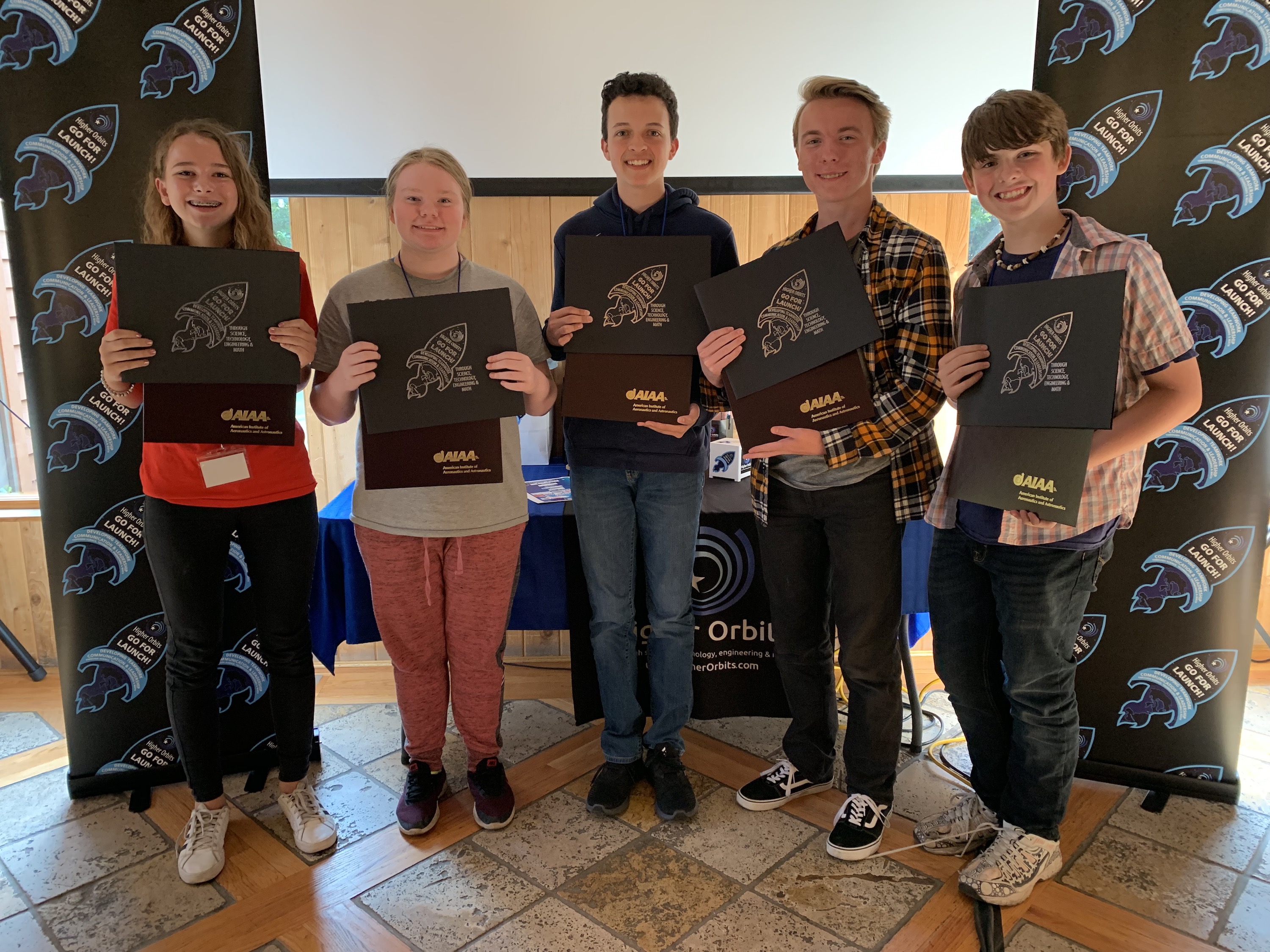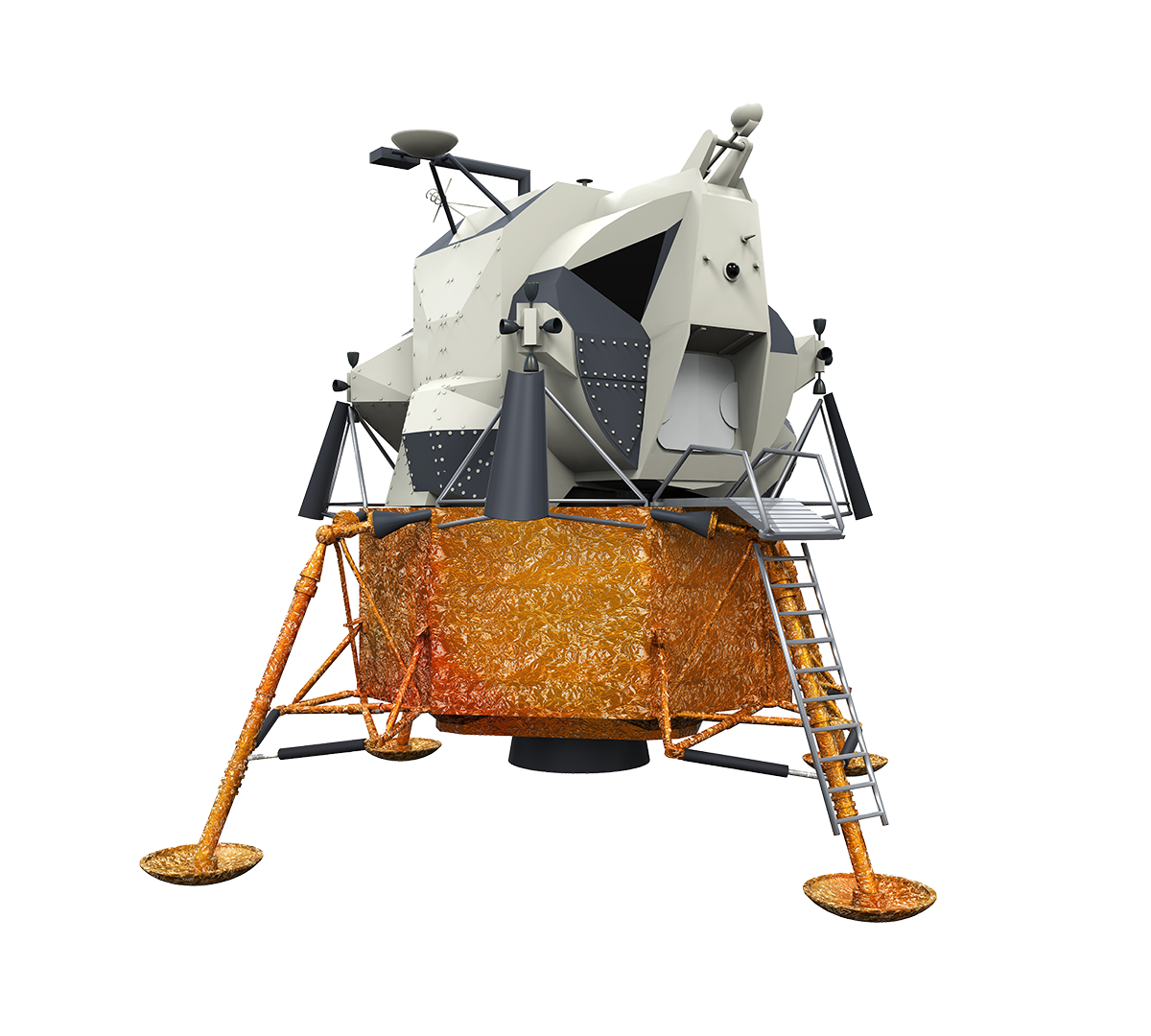Every Go For Launch! event is filled with fierce competitors and incredibly creative projects. At the end of every series, there is only one project that can prevail among the rest. Our 2019 Go For Launch! winners, team Flammenwerfer Axolotls and team V Atlas, will join the ranks of our 10 previous GFL! projects launched into orbit. Our 2019 winners will also have the honor of seeing their hard work in the stars as their project designs are developed by Space Tango and carried out by astronauts aboard the International Space Station. Their mission will start on Northrop Grumman’s NG-14, which is scheduled to launch September 29th, 2020 Eastern Time.
In honor of the upcoming launch, let’s meet our teams!
Flammenwerfer Axolotls – AIAA Apollo Series Winner
Flammenwerfer Axolotls is the rather humorous team name of Lucas Artner, Jake Drews, Grace Flynn, Daniel Marek, and Trinity Nett. In their Spring Grove 2019 event, they researched and composed a project that would study the ability of Mamestra brassicae larva to form chrysalises in microgravity. The Mamestra brassicae is also known as the Cabbage moth.

“The purpose of this project is essentially to study Cabbage moths and how they handle microgravity so they could possibly be utilized for the cultivation of crops in space and more specifically Mars,” said Nett. “The main thing we’re looking for is between the larvae phase and into the cocoon phase to see how they adapt if they’re even able to successfully create a cocoon like they would on earth.”
Research and development started as a challenge due to limited information about the moth and the larvae period itself. There was also the issue of planning and putting together all the components to create a complete and controlled project.
“We had trouble with where cameras would be and how many would be needed,” explained Drews. “Also, figuring out where and how food would be dispensed or stored was complicated. We wanted to be careful ensuring that there wouldn’t be any area of the box more desirable for the moth to make its chrysalis than any other place. Ensuring that the experiment was controlled was the main priority to guarantee useful results.”
Marek added on how the project required a lot of trial and error, but their teamwork made the process much easier and exciting. Flynn agreed that her favorite part of GFL! was the ability to connect and work with friends. With Flammenwerfer Axolotls’ teamwork, nothing could stand in their way to create and present a successful project.
Team V Atlas: 2019 Series Winner
Rachel Blevins, Kiera Fehr, Rosalie Huff, Dresden Lubic, and Riley Lubic of team V Atlas also put together an exciting project, worthy of their 2019 Series win.

Their research is aimed to discover how Southeastern termites respond to the effects of microgravity in both adulthood and the larvae phase. Specifically, their project wanted to analyze the differences in methane production between these two groups in the unit and a termite group studied on earth.
“We wanted to conduct an experiment well within the given criteria,” explained Riley Lubic. “Our first thoughts went to invertebrates and observing their behavior in a microgravity environment. We knew that structure-builders like bees, among others, would be most likely be affected by the lack of gravity in the way that they build their structures. I remember very clearly when another of our team members, Rosalie Huff, asked the question, ‘Well, what about termites?’”
As the team settled on an idea, they began workshopping and calculating the specifications of their unit. This was one of the more challenging aspects of their project. V Atlas worked well as a team and found it was easy to bounce ideas off of each other. It was important to the team that every member had an equal say.
“One of the constraints for the project was that everything going to space had to fit within a four-inch cube, so we had to figure out how many termites could fit in the cube with the termites’ food, experiment equipment, etc.,” said Huff.
V Atlas mentioned that they appreciated the team building activities during their Lexington, Kentucky GFL! event because it created an exciting environment to learn and make friends.
“My favorite aspect of the event was getting to do some fun engineering challenges that helped me get to work with my team and get to know them,” explained Fehr.
These activities allowed team members and all of the students attending the event to connect and build friendships around the world of STEM.
The Success of Flammenwerfer Axolotls & V Atlas
Members from each team noted how their experience with Higher Orbits had influenced some of their plans to enter the STEM fields in the future. Nett and Drews, of team Flammenwerfer Axolotls, both agreed that this experience helped them look into more specific fields of engineering. Huff, of team V Atlas, explained that she really wanted to pursue work with NASA in the future, possibly as an astronaut. Riley Lubic knew early on that his curiosities of space and his fathers inspiring career as a pilot would lead him to a future in STEM. Although, Higher Orbits did not cause the initial spark of these interests, he credited his GFL! experience for showing him that he could do anything he set his mind to.
Both teams developed original concepts with potential real-life applications. With the help of Higher Orbits, Space Tango, and the astronauts aboard the ISS, the team projects will come to life in a matter of weeks. It is clear that strong teamwork skills, creativity, and the uniting curiosity of space were the key elements of these successful teams and their exciting projects.
Blog by Katy – Higher Orbits stellar intern!

